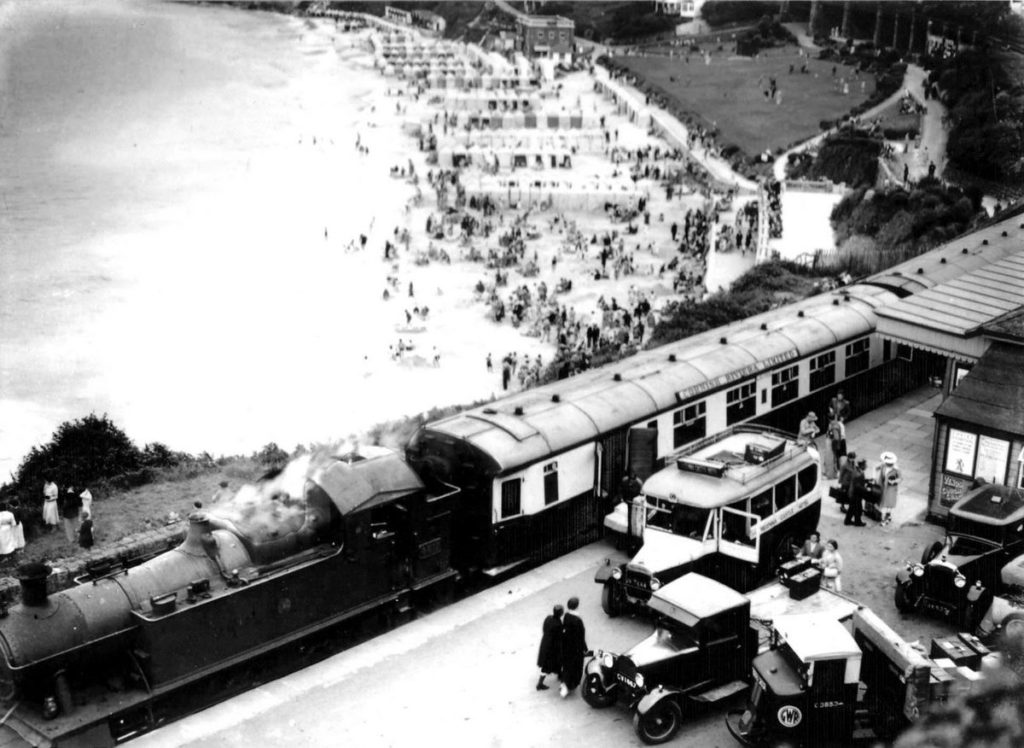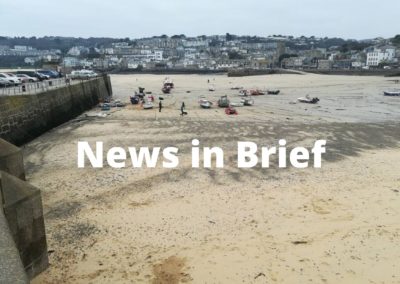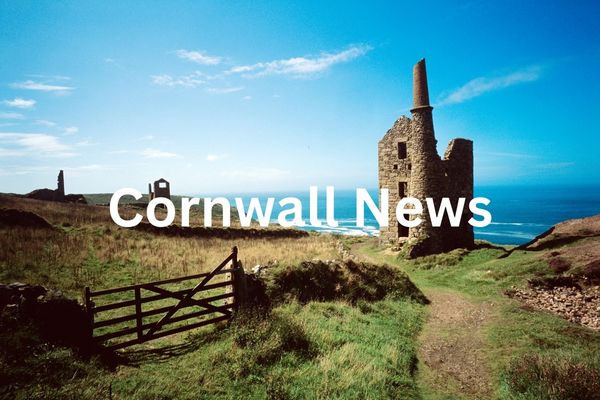By Janet Harris, St Ives Archive
Tregenna Castle, built in 1774 for John Stephens, Esq, is named after the hill on which it stands. It is not a castle, of course: the battlements are merely a decoration. Now an 84-bedroom hotel, the building originally had just 10 rooms, with another 12 added later.
John Stephens was a descendant of the Stevens family of Zennor, but somewhere along the line, the wealthy Stevenses decided to distinguish themselves from their poorer relations, and so changed the ‘v’ to ‘ph’. The Stephens family owned a great deal of property in the area, including the Manor House in St Ives — where the old Post Office building now stands — and Ayr Manor House, which has a man on horseback on its rooftop.
An article in the GWR Magazine for August 1926 stated that at one time a tunnel passed under the wine cellar of Tregenna Castle, leading to “a secret room large enough to hoard many a smuggled hogshead”. Long before the land was laid out as the Tregenna Estate, the area was extensively mined. The rich alluvial tin was very near the surface, so it is possible that the ‘secret’ passages were originally made by miners. The well at nearby Tregenna Farm, at one time part of the estate, is said to have originally been sunk as a shaft.
In the early 1800s, one of John Stephens’ descendants, Samuel Stephens, married Betty Wallis, daughter of the Cornish circumnavigator Captain Samuel Wallis, of Tremain. It would appear that Captain James Cook made a name for himself — and a fortune, no doubt — by following Samuel Wallis’ route to the Pacific Ocean!
In 1834, Samuel Stephens left Tregenna Castle to his third and favourite son, Henry. Henry Lewis Stephens was only 24 years old, but he suddenly became one of the most eligible bachelors in the country: not only was he was the owner of the one of the most beautiful mansions in Cornwall, but he also had an income of £20,000 a year. Sadly, it appears that he was due to be married, but was jilted, an event from which he did not recover. Henry never did marry, and thus ended the line of the Stephens of Tregenna. He died in 1867, and the property came into the ownership of his eldest brother, John, something their father had not wanted. However, John had no desire to live at Tregenna, and the castle was put up for sale.
Tregenna Castle then came into the ownership of the Bolitho family. Around this time, St Ives was being connected to the rest of the country by rail, and, in 1878, Tregenna Castle was leased from the Bolitho family by the Great Western Railway as a first-class hotel, catering for the gentry. Guests were met by bus from the station, as can be seen in this 1930s photo (below). It would be some years before ordinary working-class folk could afford to travel by train or, indeed, take holidays.

St Ives Archive’s Research Centre is based at Wesley Methodist Church, St Ives Road, Carbis Bay, St Ives, TR26 2SF. It is open from Tuesdays to Fridays, 10am to 2pm. For more information, phone 01736 796408, email admin@stivesarchive.org, or visit www.stivesarchive.org.
The Archive opened in 1996 and is staffed by volunteers. It is always looking for people to join its enthusiastic team. There are opportunities to learn new skills, carry out research, assist visitors, and take part in fundraising events. We offer a valuable service for anyone wishing to obtain historic information about the town, free of charge. The Archive holds over 20,000 photographs and numerous documents covering fascinating subjects such as art, maritime heritage, tourism, and traditional customs, and we also have extensive resources relating to the history of St Ives families. Why not come and visit us?



